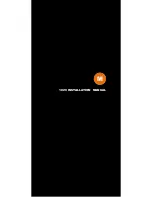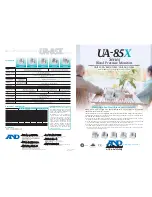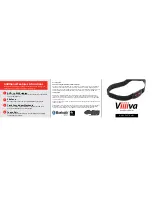
Saber PanelMount NVIS
90-3104-005 User’s Manual
Page 25
Appendix II: Cleaning AR Filters
3) Discard and replace gloves with a new pair if the gloves touch anything that would
contaminate an optical filter (e.g., do not touch hair, or scratch face with gloves).
A2.5
CLEANING PROCEDURE
1) Use a stream of ionized compressed air at 30 to 50 PSI for the removal of any lint or
other surface debris.
2) Create a cleaning pad, approximately 4" x 4" by folding the soft cleaning cloth or
tissue about four layers thick.
3) Moisten the cloth with solvent and use it to dissolve any contaminants on the
surface. Always start with 100% isopropyl alcohol.
Note: Do not apply solvent
directly to the optical filter’s surface.
4) Carefully wipe the area of the optical filter that requires cleaning. Wipe slowly from
the contaminant to the edge of the filter.
Note: Use very little pressure on the
cleaning pad.
The pad must be moist to minimize the friction between the pad
and the filter surface. If the pad is saturated, it may cause streaks on the optical
filter; discard the pad and use a new one. HEPA-filtered laminar air flowing across
the surface of the filter may be required to help the solvent evaporate uniformly.
Compressed air may be used as a substitute. Additionally, if there is a thin film of
solvent on the surface, the pad may be folded in half and wiped in the aforemen-
tioned manner to help dry the cleaned area uniformly.
Note: Never wipe a dry pad
across a dry filter surface.
5) If the surface contaminants were not removed with the 100% isopropyl alcohol,
switch to one of the more aggressive solvents (i.e., ethyl alcohol, VM & P naphtha
or acetone). Discard the cleaning pad and start with a new one after each solvent
change. Once the panel is clean, it is not necessary to continue with the other
solvents. Acetone should be used with caution on optical filters with bus bars (i.e.,
conductive heater or EMI glass) and screen printing, as it may dissolve these items.
PRECAUTIONARY MEASURES
a) Do not rub a dry cloth across a coated surface—it can damage the surface!
b) Do not apply cleaning solution or solvent directly on the optical filter surface!
c) Always start cleaning optical filters with 100% isopropyl alcohol.
d) 100% isopropyl alcohol may be required to remove residual stains from other
more aggressive cleaning agents.
e) Do not allow acetone to come in contact with an optical filter’s conductive bus
bar or any screen printing, as it can damage these materials depending on their
specific composition.
f) Never bear down on the panel surface when cleaning or handling, nor let it slide
or move when being cleaned.

































